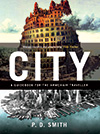London’s Necropolis Station
18 July 2012 | cities, City, London | 4 comments
In the early 1850s, following the death of his father, Charles Dickens suffered from insomnia. At night he wandered restlessly through what had become the largest city on the planet. On one of these ‘homeless night walks’ through a London cemetery, he imagined the city populated by its past residents:
‘It was a solemn consideration what enormous hosts of dead belong to one old great city, and how, if they were raised while the living slept, there would not be the space of a pin’s point in all the streets and ways for the living to come out into. Not only that, but the vast armies of dead would overflow the hills and valleys beyond the city, and would stretch away all round it, God knows how far.’
Few cities can boast a railway line for the dead. The London Necropolis Railway station was constructed by the London Necropolis & National Mausoleum Company, specifically to serve their Brookwood Cemetery, 25 miles away in Woking, Surrey. The Company’s logo was, somewhat ghoulishly, a skull and crossbones.

The station opened on 13 November 1854, just outside London's Waterloo station on the London and South Western Railway. Trains took coffins and mourners from the ‘Necropolis station’ — located between York Street (now Leake Street) and Westminster Bridge Road — directly to platforms within the cemetery. By 1874, 64,000 people had made the journey from the Necropolis station and been buried at Brookwood.
In class-conscious Britain, even funeral trains were divided according to class, and this applied to both the living and the dead passengers – although of course these only needed a one-way ticket. Indeed, the trains had carriages reserved for different classes (First, Second and Third) as well as for Anglicans or Nonconformists. At Brookwood there were even two stations, one for Anglicans and the other for Nonconformists. Each station was also provided with its own licensed bar. The divisions in Victorian society lasted up to the very edge of the grave.
When the free-thinker Charles Bradlaugh died in 1891, 5,000 mourners took the train down to Brookwood. No one was dressed in black. The 150 or so mourners who attended the cremation of Friedrich Engels on 10 August 1895 at Woking Crematorium also travelled from the Necropolis station. His ashes were later scattered from the cliffs at Beachy Head in Sussex.
Prior to 1900 there was a daily funeral express, down to Brookwood and back. To make way for an expansion of the mainline station, a new Necropolis station, designed by Cyril Bazett Tubbs, was built at 121 Westminster Bridge Road from 1900 to 1902. By the mid-1930s, trains were only running twice each week, much of their business having moved onto the roads.
On 16 April 1941 the station was hit by bombs during an air raid, damaging the lines. It was never rebuilt or re-opened. However, the entrance to the station used by First Class ticket holders – both the quick and the dead – still stands in Westminster Bridge Road, a permanent reminder of a very different London. I photographed it last year. The station and cemetery is the subject of Andrew Martin’s novel The Necropolis Railway (2003).
Sources:
Charles Dickens, ‘Night Walks’ (1860), cited from Dickens, On London (London: Hesperus, 2010), 77;
Ben Weinreb, The London Encyclopaedia (1983; repr. London: Macmillan, 2008), 992;
Ed Glinert, London’s Dead (2008), 215;
John M. Clarke, ‘The London Necropolis Railway’, Cabinet, 20 (Winter 2005/06);
Wikipedia



